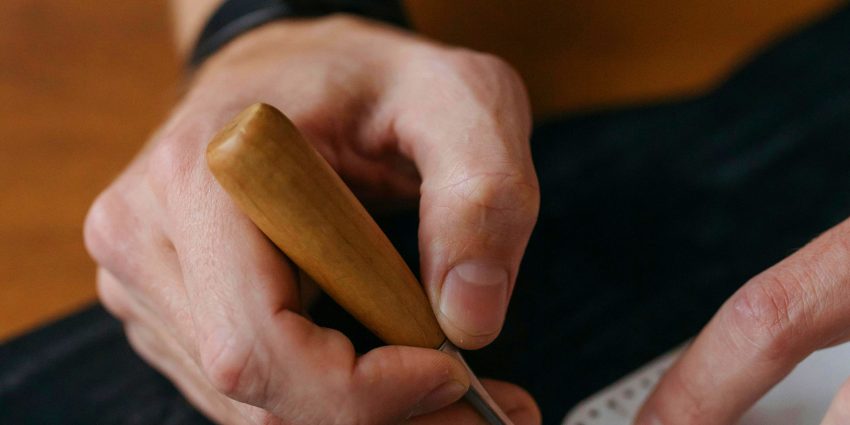Every upholsterer starts with their hands. Skill grows over time, steady stitches, smoother corners, cleaner lines. But here’s the truth every seasoned pro knows: all the talent in the world won’t save you if your tools can’t keep up.
The difference between a clean pull and a crooked wrinkle? Often the stretcher.
The difference between a crisp seam and a frayed edge? Usually the shears.
And if your regulator bends under pressure? You feel it in every cushion.
That’s why upholstery is a balance. Skill shapes the outcome. But tools determine how smooth, or how frustrating, the process becomes.
It’s Not About Having More
You don’t need a hundred tools. You need the right tools. The ones that feel natural in your grip. The ones that give you control, not complications.
These are the staples in a well-equipped upholstery kit:
- Magnetic tack hammers that let you place fasteners fast and clean
- Webbing stretchers with solid grip and zero slip
- Forged staple lifters that pull without damaging the frame
- Buttoning tools that don’t jam halfway through a project
- Regulator needles that guide stuffing with precision, not guesswork
You don’t have to fight your tools. When they’re right, they work with you—not against you.
Skill Gets You Far. Tools Help You Get There Faster.
Technique matters. No tool can replace muscle memory or years of experience. But if your gear is flimsy, dull, or clumsy, you’re constantly correcting, compensating, or redoing.
And nothing kills momentum like redoing.
With the right tools, your work becomes more fluid. You move faster. Cuts are cleaner. Stitches line up the first time. And your focus stays where it should be—on craftsmanship, not damage control.
A Good Tool Teaches You Something
If you’ve ever used a great pair of shears, you know. One cut, and you’re thinking, Why didn’t I use this sooner?
Great tools don’t just perform well, they show you what’s possible.
They reveal small errors. They make clean work feel easier.
They reward precision and punish shortcuts.
They help beginners get better, and experts go further.
The Hidden Cost of Cheap Tools
Sure, that no-name tack hammer looks good on the shelf. Until the magnet fails. Until the head loosens. Until your elbow’s sore from overcorrecting a poor balance.
Low-grade tools don’t just waste money. They waste time. Energy. Fabric. Focus. And sometimes, your confidence.
Upholstery is hard enough. Don’t make it harder with tools that don’t belong in your hand.
Better Work Starts at the Bench
When your skill and your tools are in sync, something shifts. The work gets sharper. The process gets smoother. And suddenly, that tight corner or tricky trim feels doable.
So yes, upholstery is 50% skill. The other 50%? Choosing the tools that let that skill shine.

